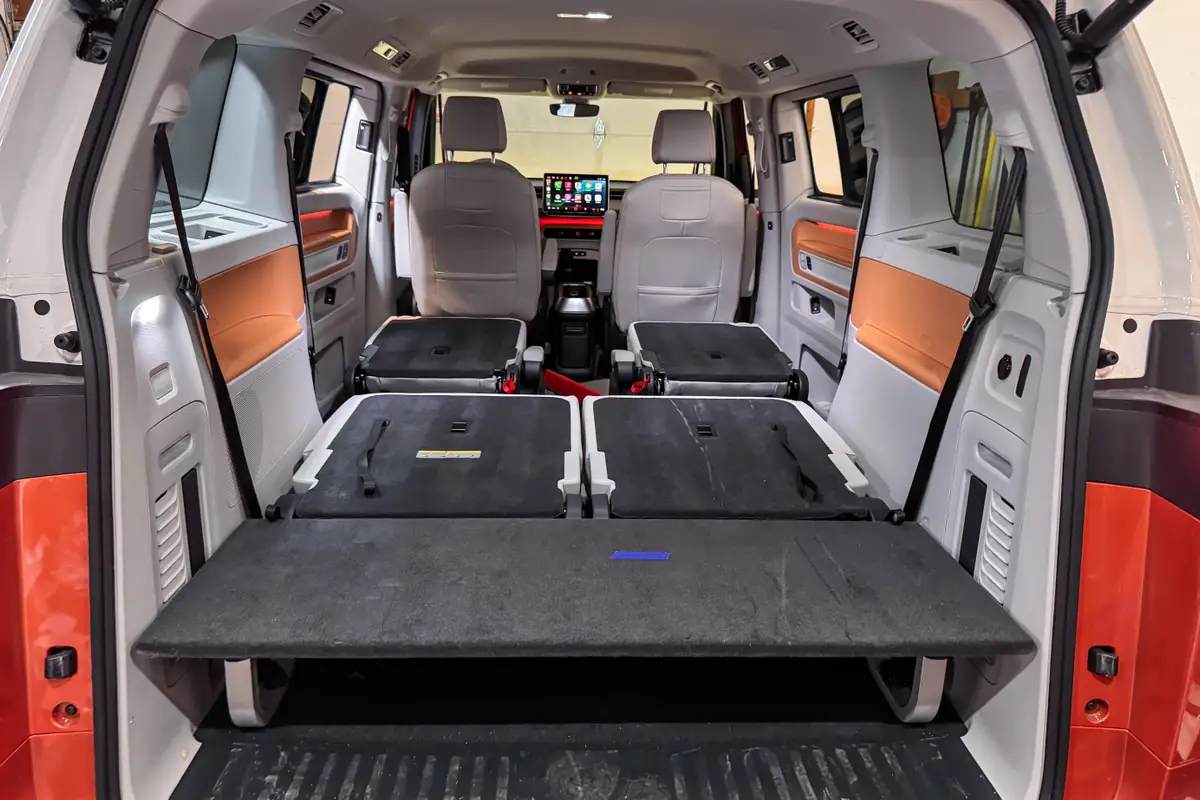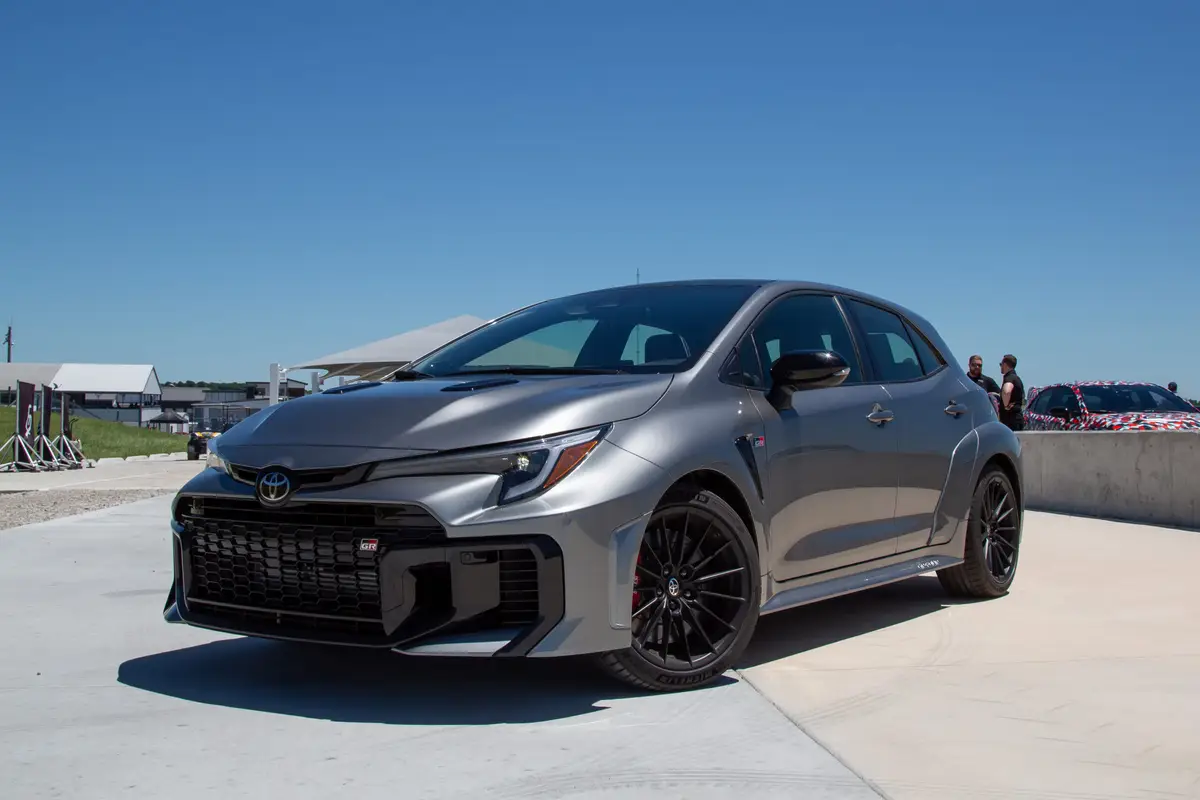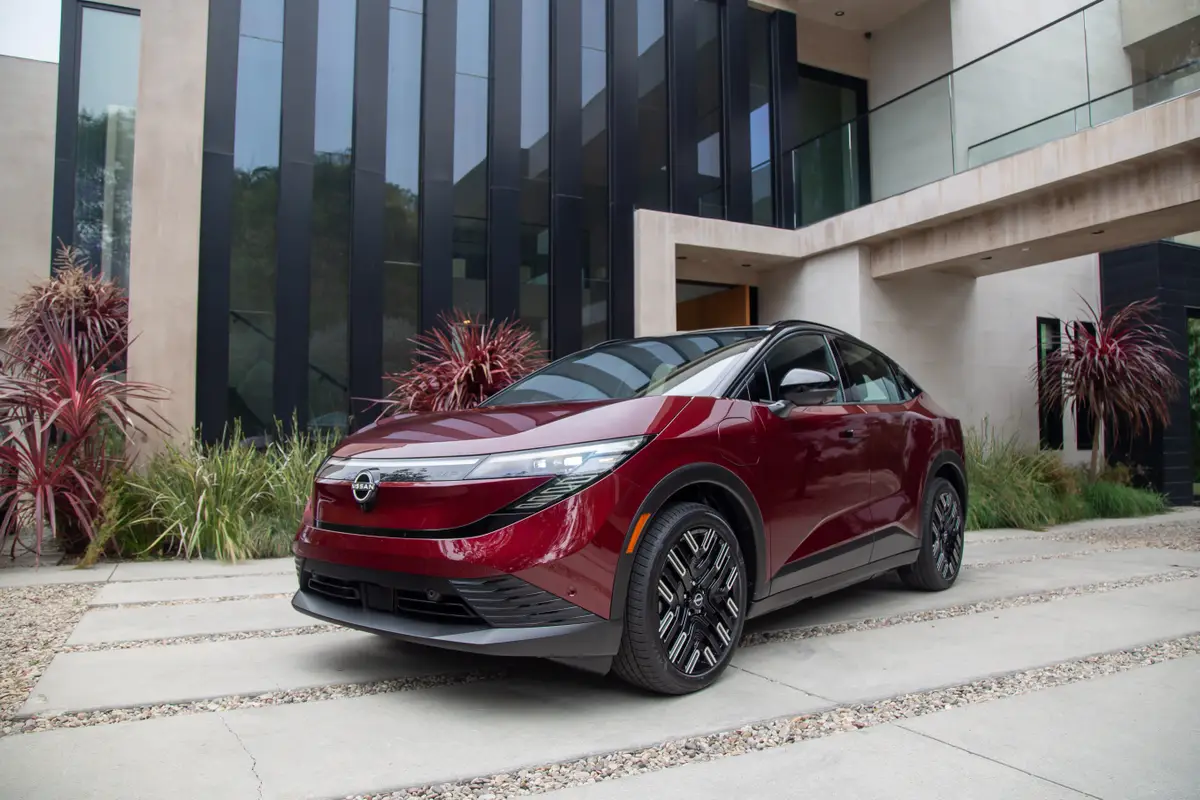First Drive Review: 2010 6.2-liter V-8 Ford F-150 SVT Raptor
When the Ford F-150 SVT Raptor in 2008, auto enthusiasts of all stripes were stopped in their tracks by the sheer outrageousness of Ford's off-road pickup truck. There has never been a factory-offered high-performance car or truck engineered to travel at speeds up to 100 mph in places where little more than rocks and sand are the only sources of traction. After several turns behind the wheel of the 5.4-liter V-8 model, we were shocked and awed by how well the Raptor fulfilled Ford's go-fast-in-the-dirt and air-catching promises.
But suddenly, the original Raptor is a base-model truck. A new 6.2-liter V-8 Raptor has arrived with the most powerful engine available in a half-ton pickup, and we've just driven it hard in the unforgiving Mojave Desert of Southern California.
PickupTrucks.com reader Matt Davis, who hangs out with the Raptor driving crew at SVTOffRoad.com, picked up his 6.2-liter Raptor last week and was kind enough to let us borrow it for a day. Also driving alongside us, our good friend Sean Holman, tech editor at Four Wheeler Magazine (you can read Sean's initial opinion of the truck at the Four Wheeler Blog).
More Power!
For years, if there was one gripe that Ford F-150 owners collectively shared, it was the distinct lack of power (and bragging rights) that come with a large-displacement V-8. The all-new 6.2-liter is meant to answer this glaring hole in Ford's powertrain lineup.
The single-overhead cam 6.2-liter V-8 is rated at a brawny 411 horsepower and 434 pounds-feet of torque. The fact that it's making its debut in today's frugal times is rather odd, like seeing the strongman sideshow freak turn up in a Cirque du Soleil performance. Where Ford's latest gas and diesel engines are modern marvels that feature direct injection, turbochargers, compacted graphite iron engine blocks and slick tech like twin intake variable cam timing, the 6.2-liter V-8 is a bit of a throwback. It has two valves and two spark plugs per cylinder, a cast-iron engine block and aluminum cylinder heads. It also features a cast-iron crankshaft, forged steel connecting rods and cast-aluminum pistons. "Powered by Ford" is proudly embossed on the valve covers.
In addition to the Raptor, the 6.2-liter V-8 can also be found bolted under the hood of the new 2011 F-Series Super Duty, where it's rated a bit lower at 385 hp and 405 pounds-feet of torque.
Before we made a beeline for the California outback north of Edwards Air Force Base to try out the whole truck, we paid a visit to our friends at K&N Air Filters in Riverside to borrow time on their chassis dynamometer to empirically measure the horsepower and torque curves of the 6.2-liter.
With the transmission in third gear, maximum torque was measured at 361.64 pounds-feet and horsepower peaked at 344.52 hp. Both measurements were made at the rear wheels instead of at the crank, which is what Ford uses to claim its advertised rating of 411 hp and 434 pounds-feet.
A 15 to 20 percent power loss from the crank to the rear wheels from friction and rotational parasitic forces is a fair number to use, gauging the relative difference between claimed and dynoed numbers. In that context, the power the 6.2-liter V-8 was able to put on the ground was better than we expected. It's got more horsepower and just a bit less torque at the rear wheels than the legacy 310-hp, 365 pounds-feet 5.4-liter V-8 has at the crank!
Update 1: April-28-2010
We dynoed the 6.2 Raptor using 87 octane regular unleaded gasoline. The 6.2 Raptor makes 411 peak horsepower at the crank using premium unleaded fuel and 401 peak horsepower burning regular. Torque remains the same with either fuel.
On the Road
After K&N, the freeways and backroads from Riverside to Mojave gave us plenty of seat time to see how the 6.2-liter Raptor behaved on the road. After all, you don't need to trailer this desert prerunner from home to OHV park or Baja Mexico.
A spring storm passing through Southern California threw hard rain at us at times, so we were able to drive on asphalt in wet and dry conditions. In both cases, the 6.2-liter Raptor felt very secure and solid on the road despite its tall stance, big 35-inch BF Goodrich tires and long-travel suspension. The ride seemed distinctively better than the 5.4-liter Raptor, though you could feel some chassis float when changing lanes.
Perhaps it's the extra weight from the larger mill or revised suspension tuning, but road feel was our first confirmation that the extra time Ford has taken to deliver the 6.2-liter Raptor has paid off well.
The second indicator that the 6.2-liter Raptor is an improved truck came from the noticeable lack of fussiness from the six-speed automatic transmission, which is the same gearbox paired with the 5.4-liter V-8. In past drives, we noted how the 5.4-liter V-8 tended to hunt for gears, looking for the best balance between speed and fuel economy. Our solution to that issue was to use tow/haul mode to hold gears longer before shifting. There's virtually none of that frequent cog swapping in the 6.2-liter Raptor, which shifted only as needed and used the engine's larger power band to stay in gear.
When it came time to plant the accelerator to pass slower vehicles, the Raptor responded by smoothly dropping a gear and revving up to its peak torque sweet spot that's available from 3,500-5,700 rpm. But the rush of power wasn't EcoBoost shove-you-back-in-the-seat-and-keep-shoving strong, like we've experienced in Ford's latest EB-powered vehicles. Opening the Raptor's throttle produced a confident and steady stream of power instead of urgent torque sent to the rear wheels. Its power nicely patches all the gaps the 5.4-liter has, but not excessively so.
To find out just how fast the Raptor is on the road, instead of relying on our butt dyno, we made a couple of runs with the truck at Willow Springs Raceway north of Los Angeles. During three passes in a stormy crosswind, we measured a best zero-to-60 mph time of 7.61 seconds, according to instrumented testing using the VBOX we brought along. That’s with the truck’s launch-optimized 4.10 rear axle, though that low final-drive ratio is somewhat negated by the Raptor’s very tall 35-inch tires. It's 1.2 seconds faster than what we measured in the 5.4-liter V-8 Raptor, and it's very respectable considering the Raptor 's hefty curb weight tips the scales at more than 6,000 pounds.
In the quarter-mile, we hit 89.04 mph in 15.86 seconds.
All of the runs were performed in two-wheel drive with off-road mode on and stability control off, so throttle interference from electronic nannies wouldn't be a problem, though that apparently introduced rear axle wrap and some wheel hop when we went wide-open throttle from a brake-torqued standing start. That's not surprising, since we've experienced similar behavior before in a standard 5.4-liter F-150.
After leaving Willow Springs, we pointed the Raptor toward the wide-open high desert near Johannesburg, Calif. It's where we recently tested a 5.4-liter V-8 Raptor, so we could put the 6.2-liter Raptor on some of the same trails but still try some new ground.
In the Dirt
We turned off the main road into Last Chance Canyon for a quick excursion up a wash that was freshly covered in spots with large rocks that fell from cliffs during the recent rains. Where possible, we squirted up open sandy sections and dodged boulders, getting a feel for the 6.2-liter V-8's power on loose surfaces. As hoped and expected, the strong engine enabled the Raptor to hunch down in the dirt for traction without feeling or becoming bogged down in excessively silty sections. That same power also allowed us make precise course corrections during rapid turns around water-formed bends in the dry riverbed, which wouldn't have been possible with the slower and lower power response with the 5.4-liter V-8. Deft punches of the right pedal could be used for maneuvering instead of being power-limited and having to brake around an obstacle, risking getting bogged down.
We followed several power line roads and dirt bike trails looking for just the right place to jump the Raptor — you are supposed to jump the truck, after all — but we didn't have much luck this time finding the right rise. We didn't want to break the truck, either.
What we did find were some great straightaways with odd and random mixes of hard-packed dirt, old crumbling asphalt and small to moderately sized whoops that proved to be an excellent refresher of how well the Raptor's specialized front and rear Fox shocks handle rapidly changing terrain conditions at speeds up to 50 to 60 mph. The 2.5-inch diameter maintenance-free dampers deliver over 11-inches of front and more than 13-inches of aft wheel travel. Three oil gates inside their barrels control the dampening rate as the shock responds to every surface condition the truck encounters, from pothole to mudhole.
The 6.2-liter V-8 excelled in these trail situations as well. Faced with the on-the-spot decision to immediately brake and crawl at low speeds or, instead, quickly speed up to leverage the suspension to rapidly cross changing surfaces — like washboards that gave way to wider-spaced dips or whoops that grew deeper troughs — the extra power rapidly pushed the speedometer to the right so we didn't bounce too hard over stuff that would be tough on the truck and passengers at lower speeds.
What also works well with the 6.2-liter V-8 is the Raptor's specialized off-road mode. Enabled with the push of a button, off-road mode changes the engine’s throttle map to give the Raptor linear throttle response, like a race truck, instead of high power at the beginning and tapered at the end, like a street truck. Off-road mode also changes the transmission’s shift points to hold its gear and not upshift after letting off the throttle at high speeds. It also locks out the sixth-gear overdrive at the top of the transmission to keep the rpm high.
We also spent some time just running the Raptor hard in a wide open desert expanse, drifting and power sliding on the dirt to get further familiar with the 6.2-liter V-8's power band without risk of hitting rocks, bushes or an unexpected deep rut. Flatland isn't part of the Raptor's native hilly and rutted trail-running habitat but it sure is fun throwing the rig around a field.
Adding It All Up
But there's more to the Raptor we tested than just go-fast antics. In addition to the $3,000 upgrade to the 6.2-liter V-8 over the 5.4-liter Raptor's $38,020 starting price, this Raptor also came with the Luxury Package ($1,950) with 10-way power leather heated front seats, power adjustable pedals and a Sony audio system; a moonroof ($995); Ford's Sync entertainment and navigation system ($2,430); a bed extender ($250); tailgate step ($375); and a rearview camera that's a lifesaver backing up off-road ($450). The grand total was $48,445, including a $975 destination charge. Not included: the $1,075 "digital mud" exterior graphics option, so we could decorate the truck with the real stuff.
Are those luxuries worth it? Maybe not the moonroof, but all of the others make sense if this is your ultimate fantasy pickup that can be used for work and play.
One disappointing thing we noticed about the 6.2-liter Raptor was its lack of external differentiation from the 5.4-liter version. Both have the same twin exhaust tips and wheels. On the Ford Racing Raptor XT that was shown at SEMA, there was a cool that clearly identified the powerplant residing in the truck's engine bay, but on this truck there was nothing. It's an issue that deserves a fix, even one as simple as a small badge.
The last item we measured was fuel economy. We tallied it at two points during the trip. The first part combined freeway and country road driving with off-road driving, and it came out to a lowly 10.4 mpg. The second part only examined highway miles, which were better at 14 mpg but certainly nothing to brag about.
Those familiar with the telenovela development history of the 6.2-liter V-8 powertrain — which is too long to get into in this story — know that this engine has been in development since the early part of the last decade. What might have been considered efficient or satisfactory had it arrived around 2006 isn't necessarily the case today. Yes, it has gobs of power, but even a six-speed transmission isn't enough bring mileage up to where it should be. That's the biggest challenge Ford SVT has in front of it with the Raptor because the rest is brilliant.
Compared with the 5.4-liter truck, the 6.2-liter V-8 Raptor is a better balanced package of power and refinement on and off the pavement. There's no doubt that the 6.2-liter V-8 gives the Raptor the extra capability it's been demanding. It's an incredibly good deal for only an extra $3,000.

Featured stories




